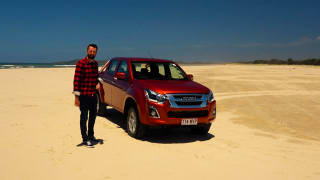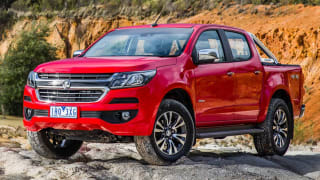The Ranger offers a choice of two drivetrains – 4x2 or 4x4 – and five model grades comprising XL, XL Plus, XLS, XLT and Wildtrak (for detailed model descriptions see Snapshots).
We’ll start with the 4x2 buyer who is typically a commercial user, so most of the model grades and body/engine/transmission/suspension combinations are aimed at delivering the hardest working capability at the lowest cost.
The 4x2 range starts with the XL which is available as a single cab cab-chassis ($27,390) or single cab ute ($28,390) with the 2.2-litre TDCi four cylinder turbo-diesel and six-speed manual gearbox. These are the lowest priced Rangers in the fleet and the closest to the ground, as they are the only variants that use conventional height suspension, or ‘low rider’ as Ford calls it.
The next step-up, literally, in the 4x2 range is the XL 'Hi-Rider'. This offers the same high-riding suspension as the 4x4 model, resulting in extra clearance for those needing access to rugged work sites or just wanting the tougher-looking 4x4 stance.

The XL Hi-Rider comes in a choice of single cab cab-chassis ($30,890 man/$33,090 auto), super (extended) cab cab-chassis ($33,240 man only), dual cab cab-chassis ($37,590 auto only) and dual cab ute ($36,390 man/$38,590 auto) body styles. Again the only engine available is the 2.2-litre.
Top rung on the 4x2 ladder is the XLT Hi-Rider, which brings added luxury features, lots of chrome and the larger 3.2-litre TDCi five cylinder turbo-diesel. Body choice is restricted to super cab ute ($46,690 auto only) and dual cab ute ($46,490 man/$48,690 auto).
The 4x4 range starts with the base level XL in either single cab cab-chassis ($38,790 man only), dual cab-chassis ($43,290 man/$45,490 auto) or dual cab ute ($44,290 man/$45,890 auto). Like the 4x2 XL models, the only engine available at this grade is the trusty 2.2-litre.
Next up is the XL 4x4 with the larger 3.2-litre TDCi five cylinder turbo-diesel, available in single cab cab-chassis ($41,290 man/$43,790 auto), super cab cab-chassis ($43,790 man/$46.265 auto), super cab ute ($44,790 man only), dual cab cab-chassis ($45,790 man/$47,990 auto) and dual cab ute ($46,790 man/$48,990 auto).
The XL Plus has been designed and equipped specifically for mining companies, government agencies and other rugged industry roles, with its expanded wiring harness, dual batteries, canvas seat covers etc. It’s available only as a 3.2-litre auto but offers a choice of three body styles – single cab cab-chassis ($46,180), dual cab cab-chassis ($52,960) and dual cab ute ($51,960).
Next rung is the XLS, which is designed to bridge the gap between XL and XLT with some practical and appealing additions. Available only as a dual cab ute with either the 2.2-litre ($45,590 man/$47,790 auto) or 3.2-litre engine ($48,090 man/$55,590 auto).

Nearing the top is the well-appointed XLT with 3.2-litre engine in a choice of super cab ute ($52,390 man/$54,390 auto) and dual cab ute ($54,390 man/$55,590). The FX4 Special Edition, which is basically a dress-up pack for the XLT, is only available as a dual cab ute ($58,915 man/$61,115 auto).
Top rung of the Ranger ladder is the Wildtrak, offering a unique blend of interior and exterior appointments to justify its premium pricing. Only available as a dual cab ute with 3.2-litre engine, but in a choice of manual ($59,590) or automatic ($61,790).



















